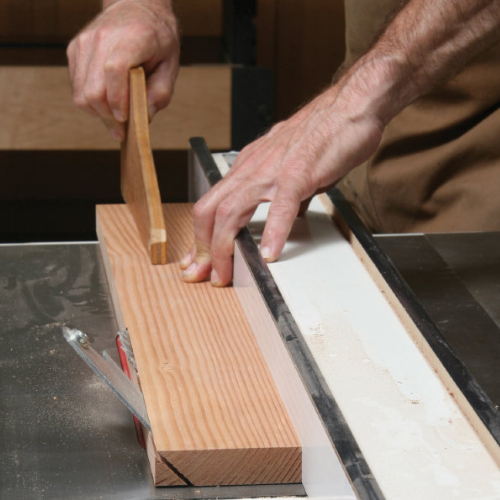Expert Answers: Ripping Bevels on the Table Saw
Q An upcoming job requires ripping a lot of bevels on the table saw, a process I’ve always found challenging. What’s the best approach to the operation?
—Marty Kinwood, Phoenix, Arizona
A Senior editor Paul Anthony replies:
It’s true that ripping bevels can feel a bit dicey at times, but there are things you can do to ensure safety, success, and ease. First of all, it’s important that your stock has been dressed flat, square, and with parallel edges. Then set up the saw and orient your workpiece so that the beveled edge of the keeper piece will be above the leaning blade. This is important because a bevel that’s trapped under the blade invites burning or rough cutting if a bow in the board causes it to lift up during the cut. Also, a blade that’s not perfectly parallel to the cutting path can tend to scorch a trapped bevel.

Ripping right. Ripping bevels on a right-tilt saw requires working with the fence to the left of the blade to avoid trapping the finished bevel under the blade.
With a right-tilt saw, this approach generally dictates working with the rip fence to the left of the blade, which can feel a bit awkward at first, but you get used to it. The real problem with beveling on a right-tilt saw is that the fence typically only has about 12″ of travel to the left of the blade. Therefore, beveling very wide panels forces you to work with the fence to the right, trapping the bevel under the blade. In this case, just do your best to keep the panel pressed down firmly near the blade to prevent it from lifting.
If you have a splitter that tilts with the blade, definitely use it when ripping bevels, as it will prevent kickback and ensure a clean cut. If you’re forced to work without a splitter, take care to hold the workpiece solidly against the fence throughout the cut to prevent it from drifting toward the blade.
Shop for your Table Saws at Tools4Wood

Article by: Paul Anthony


Comments
Add comment